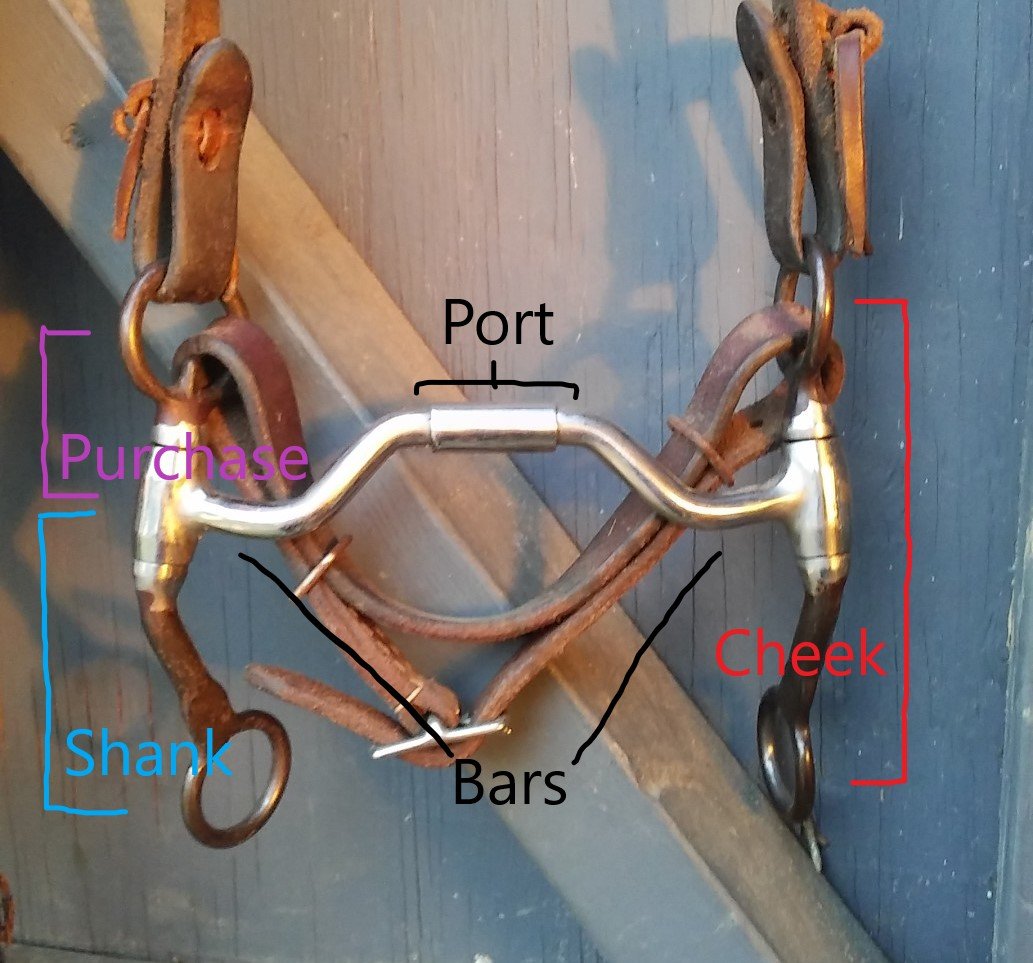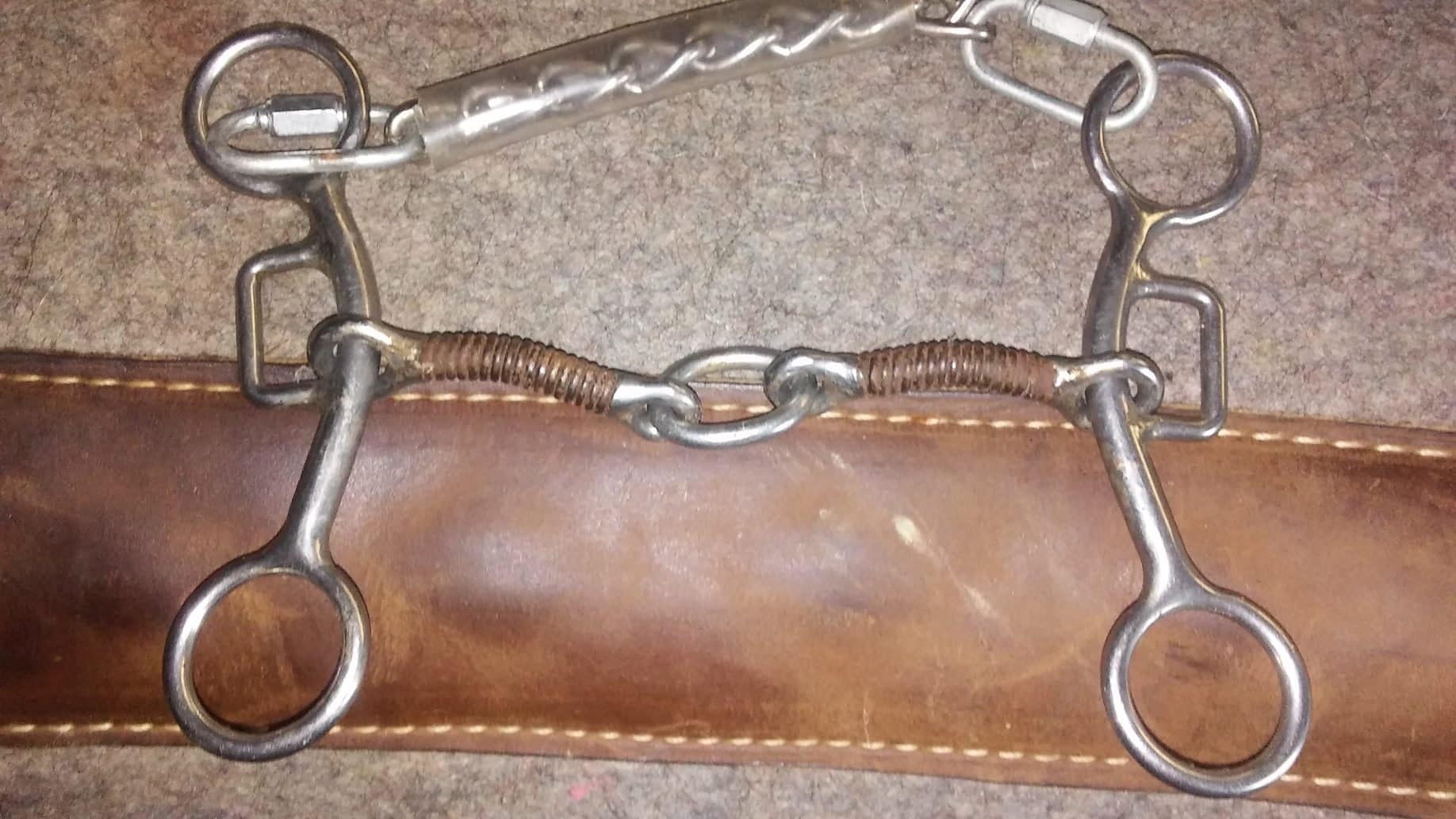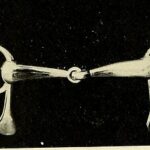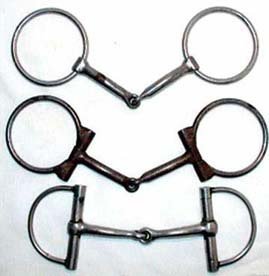
Choosing the right bit is crucial for both the rider’s and the horse’s comfort and safety. However, selecting the right bit can be overwhelming with so many options available. A snaffle bit is a great place to start, as it is the most common and mild type of bit.
Why a Snaffle Bit Should Be Your First Choice
Mild and Gentle
Snaffle bits are designed to be mild and gentle on the horse’s mouth. Unlike other types of bits, a snaffle bit does not have leverage action, meaning that the pressure applied to the reins is directly transferred to the horse’s mouth. This makes snaffle bits a good choice for horses that have a sensitive mouth or are just starting out with bitting.
Versatile
Snaffle bits are also versatile in their design, making them suitable for a wide range of riding disciplines and activities. From dressage to reining to trail riding, there is a snaffle bit that can meet the needs of your horse and your riding goals. Snaffle bits come in a variety of styles, including eggbutt, D-ring, loose ring, and full cheek, each with its own unique features and benefits.
Encourages Softness and Flexibility
Snaffle bits encourage softness and flexibility in the horse’s mouth. Because the pressure applied to the horse’s mouth is direct and mild, snaffle bits can help to encourage the horse to soften and flex at the poll, which can improve their overall performance and responsiveness to the rider’s aids.
Good for Training and Learning
Snaffle bits are also a good choice for training and learning. Because they are mild and gentle, snaffle bits can help to build trust and confidence in the horse, which is important for developing a strong partnership between horse and rider. Snaffle bits can also be used to introduce the horse to bitting and to teach them basic commands and cues.
How to Choose the Right Snaffle Bit for Your Horse
Assess Your Riding Goals
Another important factor to consider when choosing a bit is your riding goals. Different types of bits are designed for different purposes. For example, a full cheek snaffle is a good option for horses that are still learning to steer, as the long cheekpieces provide a clearer signal to the horse. On the other hand, a loose ring snaffle may be a better choice for horses that have a sensitive mouth, as the loose rings allow for more movement and reduce pressure.
Evaluate Your Horse’s Behavior
Your horse’s behavior can also play a role in choosing the right snaffle bit. Horses that tend to lean or pull may benefit from a D-ring snaffle, which has a unique shape that prevents the bit from sliding too far into the horse’s mouth. Horses that have a tendency to open their mouths may benefit from a full cheek snaffle, which helps to prevent the bit from sliding too far back.
Ensure Proper Fit and Adjustment
Once you have selected a bit that is appropriate for your horse’s mouth anatomy, riding goals, and behavior, it is important to ensure that the bit fits properly and is adjusted correctly. A poorly fitting or adjusted bit can cause discomfort and even injury to your horse. The bit should sit comfortably in your horse’s mouth, with the cheekpieces at the appropriate length.
Consider Your Horse’s Mouth Anatomy
The first step in choosing the right snaffle for your horse is to consider their mouth anatomy. Horses have different shaped mouths, and some may have more sensitive areas than others. For example, horses with low palates may benefit from a French link mouthpiece, which has a flat link that distributes pressure more evenly across the horse’s tongue.
Understanding the Different Types of Snaffle Bits
Snaffle bits are one of the most important pieces of equipment for horse riders. They come in a variety of different types, each with their own advantages and disadvantages. Knowing the differences between the various types of snaffle bits can help you make an informed decision when selecting one for your horse. There are six main types of snaffle bits: half-cheek snaffles, eggbutt snaffles, D-ring snaffles, full-cheek snaffles, and loose-ring snaffles.
Loose Ring Snaffle
The loose O-ring (see top bit in photo below) is a very soft snaffle that has a lot of give. The mouthpiece is not fixed to the rings, but rather retains the ability to slide along the ring. This allows the horse more flexibility to carry the bit comfortably.
However, it also has its drawbacks. The sliding action of the mouthpiece along the ring creates the potential for pinching the corners of the mouth. This can be solved for most horses by using rubber bit guards. But some horses still do not appreciate the lack of stability. This instability also makes bit not as effective for teaching contact and collection in the beginning stages. For this reason, I personally save this bit for later in the training process when the horse is ready to be ridden on a looser rein.
D-Ring Snaffle
The western d-ring (middle right) is basically just an O-ring (top right) with fixed rings instead of loose rings. The english d-ring (bottom right) is more of a traditional d-shape.
This bit falls somewhere in between the loose O-ring and the eggbutt. It has the stability of the eggbutt as they share the fixed ring design. But it also has a little more flexible feel of the O-ring given the larger rings that mimic those of the loose O-ring.
This is my personal favorite. A lot of horses like it and it is very versatile. I like having a little bit more stability than a loose O-ring, so this is the bit I use for saddle breaking and basic foundation training before I switch to the eggbutt for beginning contact and collection. This is also the bit I switch back to once the horse is going well in contact and starting to pick up on collection.

Eggbutt Snaffle
Much like the d-ring, the eggbutt snaffle is a much better choice for teaching contact and collection than a loose O-ring. The fixed rings provide the stability that the loose O-ring lacks. The eggbutt shape allows for firm contact and clear communication through the reins.
The problem of pinching the corners of the mouth is solved with the fixed rings. Horses that like the freedom of the loose O-ring may not like the eggbutt as it does sacrifice flexibility for stability.
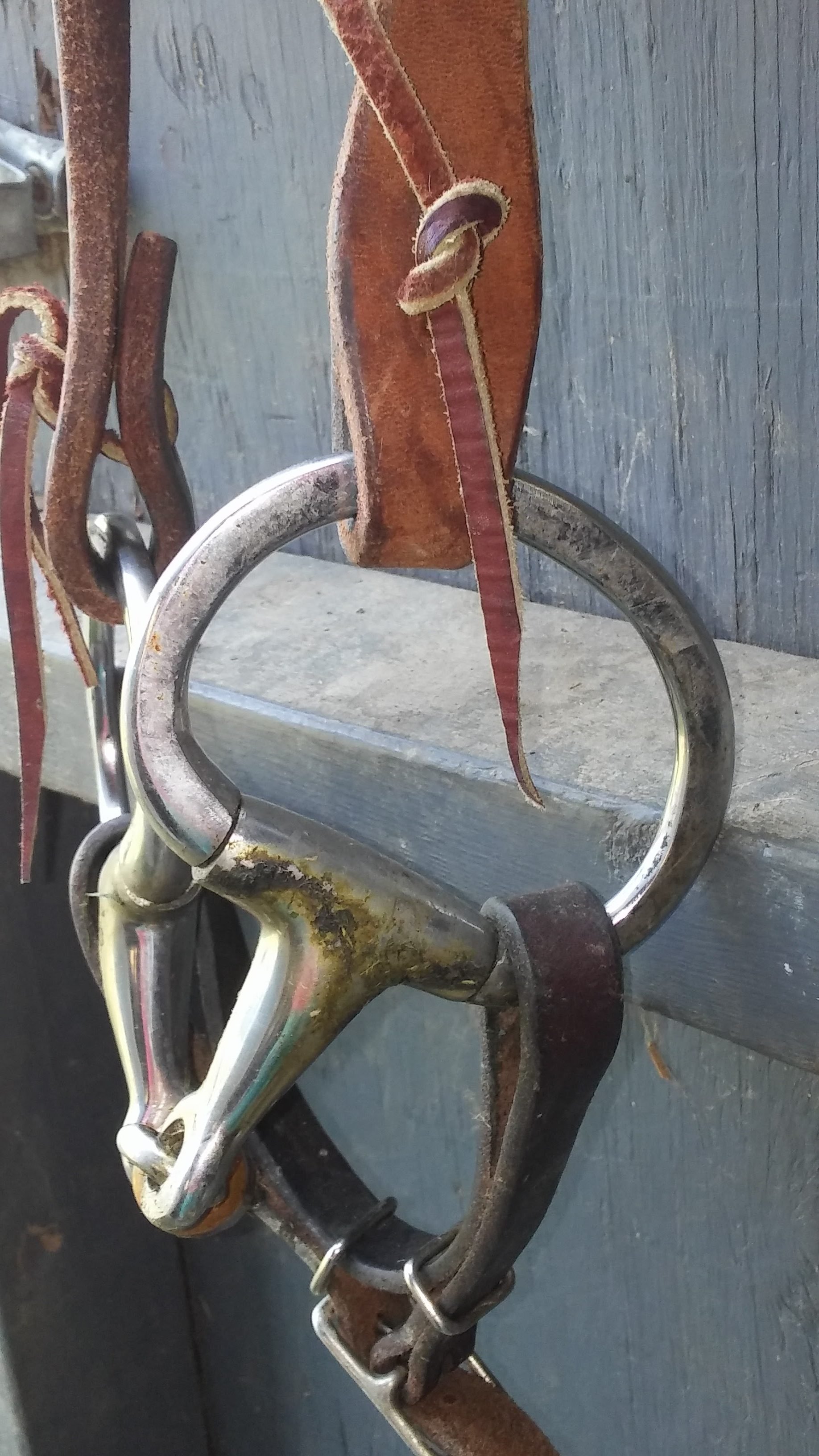
Full Cheek Snaffle
I don’t like this bit at all and view it as a last resort. It is very stiff and doesn’t have any give. This is a bit that I reserve for young or sour horses who have a habit of pulling the bit through their mouth. I prefer to address the problem through training first, but sometimes a full cheek becomes necessary to break the habit until the horse learns that he cannot pull the snaffle through his mouth.
This bit also comes in the half cheek version. The half cheek has a little more flexibility, but I still find it stiff and awkward.
A show horse should not need this bit for more than a few weeks. If he cannot be broken of the habit of pulling the bit through the mouth and switched to a standard snaffle within a few weeks then he either need a different trainer or a different job that he actually enjoys and doesn’t resist doing.
The only time I condone the long-term use of this bit is on a trail horse with a history of pulling the bit through the mouth but has been broken of the habit. If, in this instance, the rider wishes to use one as a precaution when riding in unfamiliar situations, I find that acceptable, even advisable.
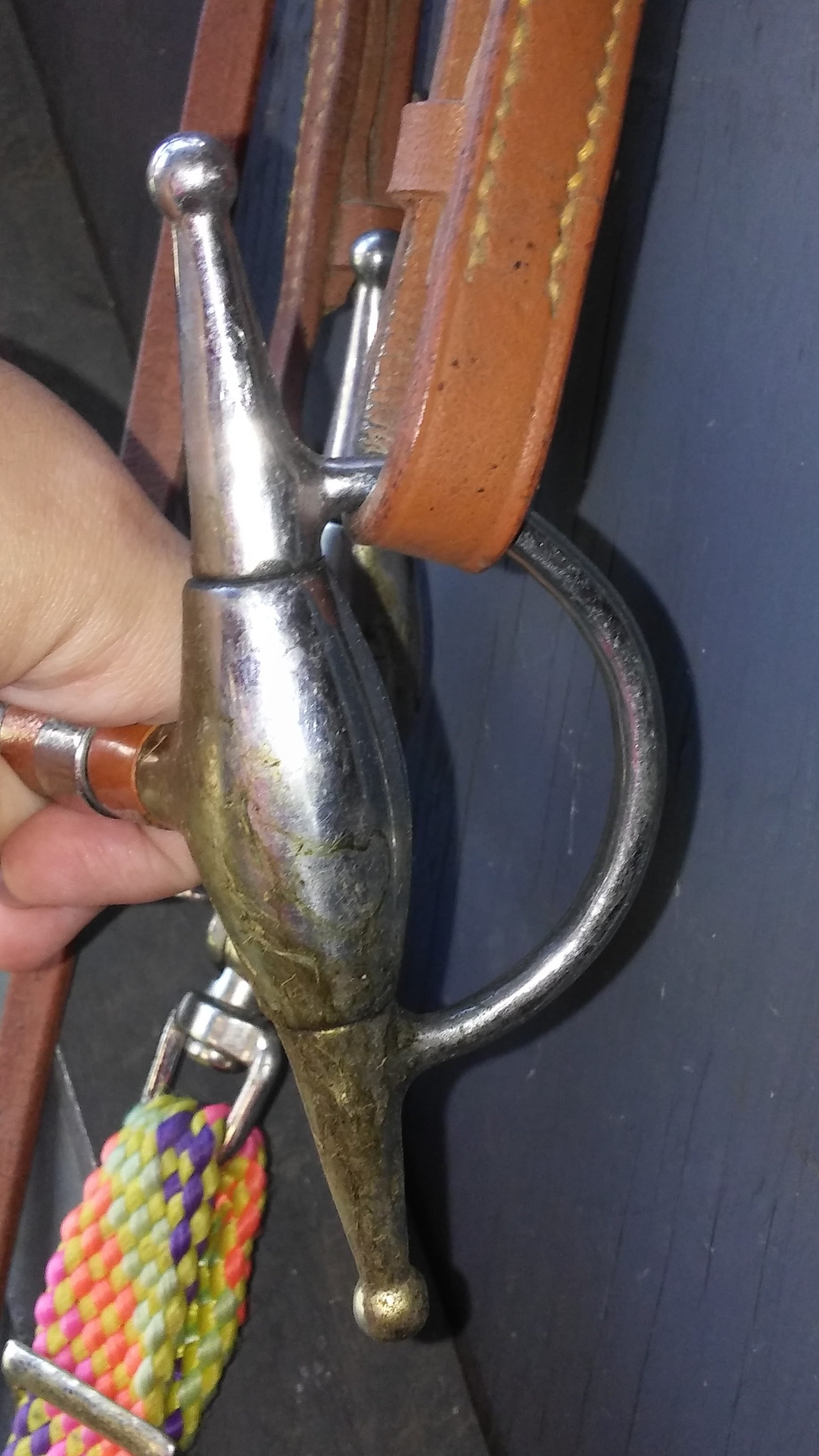
Understanding the Most Common Snaffle Mouthpieces
Single-Jointed Mouthpiece
A single-jointed mouthpiece has a simple design, with a single joint in the middle of the mouthpiece. This joint can create a nutcracker effect, which can be uncomfortable for some horses. However, a single-jointed mouthpiece can be a good option for horses with a low palate or a sensitive mouth.
Double-Jointed
A double-jointed mouthpiece has a more complex design, with two joints in the middle of the mouthpiece. This design helps to distribute pressure more evenly across the horse’s mouth, making it a good option for horses with a sensitive mouth. Double-jointed snaffles come in a variety of styles, including French link, dog bone, and Dr. Bristol, each with their own unique features.
Mullen Mouth
A mullen mouth has a straight bar instead of a joint in the middle of the mouthpiece. This design can be a good option for horses that have a low palate or a sensitive mouth, as it provides a more stable and comfortable fit.
Ported Mouthpiece
Yes, you read that correctly. Snaffles can have a ported mouthpiece just like a curb bit. A ported mouthpiece has a raised center section, which can help to distribute pressure more evenly across the horse’s mouth.
Common Bit Materials
Snaffle bits come in different materials, each with its own advantages and disadvantages. The choice of material for a snaffle bit depends on the horse’s individual needs and the rider’s preferences.
Stainless Steel
Stainless steel is a popular material used in making snaffle bits due to its durability, affordability, and resistance to rust. However, stainless steel bits can be heavy and may not be suitable for horses with sensitive mouths.
Copper
Another material commonly used in making snaffle bits is copper. Copper bits are softer than stainless steel, making them more comfortable for horses with sensitive mouths. They also stimulate salivation, which helps to keep the horse’s mouth moist. However, copper bits require more maintenance than stainless steel bits as they can tarnish easily.
Sweet Iron
Sweet iron is a popular choice among equestrians and one of my personal favorites. These bits are made of iron that has been treated with a special process that gives them a sweet taste and a distinctive blue-gray color. This taste encourages horses to salivate, which can help them to relax and accept the bit more easily. Unfortunately, sweet iron bits are not suitable for all horses. Some horses may have allergies or sensitivities to the material.
Titanium
Finally, there are titanium bits. These bits are lightweight and extremely durable. They are also hypoallergenic, making them ideal for horses with sensitive skin. However, titanium bits can be expensive, and they may not be readily available in some areas.
In conclusion, Stainless steel is a good all-around option, while copper is ideal for horses with sensitive mouths. Titanium bits are the most durable and hypoallergenic but may not be suitable for all budgets.
Choosing the right bit for your horse is an important decision that can impact their comfort and performance. By considering your horse’s mouth anatomy, riding goals, and behavior, and ensuring proper fit and adjustment, you can select a bit that is appropriate for your horse and enjoy a comfortable and successful ride.
Choose What Works Best for You and Your Horse
This is all just a guide from my own experience and opinions. You should choose what works best for you and your horse. You should also keep in mind show rules if you are planning on showing you horse. Always check the rule book before changing you bit so you don’t find yourself stuck with a bit that will disqualify you on competition day.
All of these snaffle types can be found with virtually every mouth piece imaginable, so there is something out there for everyone.
Also note that a bit should not be viewed as a replacement for training. If you are having behavior problems with your horse, check that your bit is not causing him pain, but do not automatically assume that a bigger, fancier bit will be the cure.
A new bit is never a replacement for good training. But good training is easier with a good bit.
Tweet
Still to come in our Bits 101 series: Leverage Bit Basics, The Bitless “Revolution”, 10 Common Bit Myths Busted, and “Specialty” Bits.
Cover Photo by eXtensionHorses






